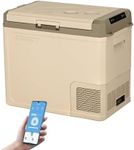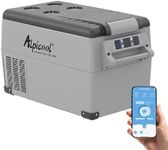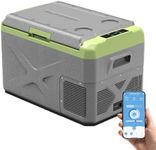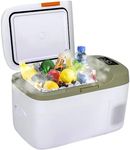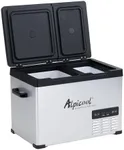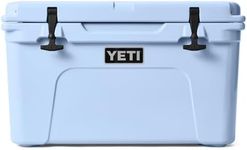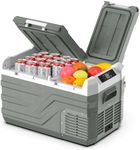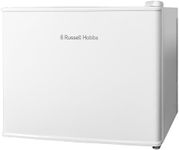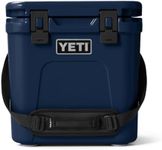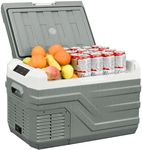Buying Guide for the Best Electric Coolers
When choosing an electric cooler, it's important to consider how you plan to use it, whether for camping, road trips, or simply keeping drinks cold at a picnic. Electric coolers are a convenient alternative to traditional ice chests, as they can maintain a consistent temperature without the need for ice. Understanding the key specifications will help you select a cooler that best fits your needs, ensuring your food and beverages stay fresh and cool.CapacityCapacity refers to the amount of space available inside the cooler, usually measured in liters or quarts. This is important because it determines how much food and drink you can store. Smaller coolers, around 20-30 liters, are suitable for short trips or personal use, while larger coolers, 40 liters and above, are better for family outings or longer trips. Consider how much you typically need to store and choose a capacity that matches your requirements.
Cooling PerformanceCooling performance indicates how well the cooler can maintain a low temperature. This is crucial for keeping your items fresh and safe to consume. Electric coolers often specify their cooling ability in terms of degrees below ambient temperature. Basic models might cool to 20-30 degrees below ambient, suitable for mild climates, while more advanced models can go 40 degrees or more below, ideal for hotter environments. Consider the typical climate you'll be using the cooler in to determine the necessary cooling performance.
Power SourceThe power source for an electric cooler is what allows it to function, typically through a 12V car outlet or a standard 110V/220V wall outlet. Some models offer dual power options, which is useful for versatility between car trips and home use. If you plan to use the cooler primarily in a vehicle, ensure it has a 12V adapter. For home use or when camping with access to electricity, a model with a standard plug is beneficial. Choose based on where you'll most frequently use the cooler.
PortabilityPortability refers to how easy it is to move the cooler around. This is important if you plan to transport it frequently. Features like wheels, handles, and weight all contribute to portability. Lightweight models with sturdy handles or wheels are ideal for those who need to move the cooler often, such as campers or tailgaters. If the cooler will mostly stay in one place, portability might be less of a concern.
Energy EfficiencyEnergy efficiency measures how much power the cooler uses to maintain its temperature. This is important for minimizing energy consumption, especially on long trips or when using a vehicle's battery. Look for models with energy-saving features or those that are rated for low power consumption. If you plan to use the cooler for extended periods, an energy-efficient model will help conserve power and reduce the risk of draining your vehicle's battery.
DurabilityDurability refers to how well the cooler can withstand wear and tear. This is important for ensuring a long lifespan, especially if you plan to use it in rugged environments. Look for coolers made from high-quality materials with robust construction. If you expect to use the cooler frequently or in challenging conditions, prioritize models known for their durability. For occasional use in gentle conditions, durability might be less critical.

